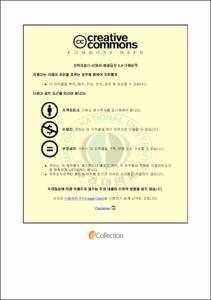니켈(NiCl2)과 수온에 노출된 북방전복, Haliotis discus hannai의 생리 생화학 및 면역학적 반응
- Abstract
- Responses of physiology, biochemistry and immunology in pacific abalone, Haliotis discus hannai exposure to NiCl2 and water temperature
Yong-Joo Cha
Department of Fish pathology, Graudate School,
Pukyung National University
Abstract
Water temperature of the sea level has increased by global warming, the increase in water temperature will affect the life activities of the aqueous biological metabolism, osmoregulation and immunity. Nickel is a substance that exists naturally in the biosphere. The trace metals are essential to maintain homeostasis of the organism. Processing of alloy mining, smelting, refining and fossil fuel, a large amount of nickel has been discharged from the discharge water.
In the natural aquatic environment, organisms are exposed to multiple stressors, and the exposure to stress can result in significant changes in physiological and immunological responses. In particular, in the case of shellfish and gastropod, mobility is limited compared to the fish in the environment, it can be seriously affected.
Therefore, The objective of this study was analyzed to physiological, biochemical. and immunological response exposed to Ni (100 ㎍/L, 200 ㎍/L, 400 ㎍/L) and water temperature (18℃, 22℃, 26℃) in the Pacific abalone during 3 weeks.
Bioaccumulation of nickel appeared Hepatopancreas ≥ Digsetive gland ≥ Gill ≥ Muscle. It is increased to higher water temperature except for muscle. Antioxidant enzyme was analyzed from Hepatopancreas and Gill. SOD was increased 2 weeks, 100㎍/L. but decreased at 3weeks. CAT was increased ≥ 2 weeks, 100㎍/L in Hepatopancreas. Gill was increased at 1weeks, 100㎍/L. Similarly, CAT was decreased at 3 weeks. GSH was significantly increased 100㎍/L at 1 weeks in Gill. GST was showed the same tendency as the GSH.
Hematological components and immune factor were analyzed hemolymph in pacific abalone. In inorganic substance of parameter, calcium was significantly increased 200 ㎍/L at 3 weeks. magnesium showed a tendency to decrease. In Organic substance, Total protein, Glucose and Albumin were not observed in the change. In enzyme factor, ALP tended to increase with high temperature and concentration (≥ 2 weeks). THC was no significance, but 26℃ was showed a tendency to decrease. Lysozyme was increased at 1 weeks 22℃. but it was decreased in 2 weeks. PO was significantly increased 26℃, 400 ㎍/L at 2 weeks.
Our results showed that NiCl2 concentrations below 400 μg/L were able to stimulate antioxidant activity and immune responses in abalone. However, complex stressors, thermal changes, or nickel, can modify the antioxidant activity, immunological response and lead to changes in the physiology of host–pollutant interactions in Haliotis discus hannai.
- Issued Date
- 2015
- Awarded Date
- 2015. 2
- Type
- Dissertation
- Publisher
- 부경대학교 수산생명의학과
- Affiliation
- 부경대학교 수산생명의학과
- Department
- 대학원 수산생명의학과
- Advisor
- 강주찬
- Table Of Contents
- 목차
목 차 ·········································································································ⅰ
Abstract ·····································································································ⅲ
Ⅰ. 서론 ······································································································1
Ⅱ. 재료 및 방법 ··························································································6
1. 실험동물 및 실험환경 ···············································································6
2. Bioaccumulation ·······················································································7
3. 항산화효소 분석 ·······················································································8
3-1. Superoxide dismutase (SOD)·······················································8
3-2. Catalase (CAT) ·················································································8
3-3. Glutathione (GSH) ·············································································8
3-4. Glutathione S-transferase (GST) ················································8
4. Hemolymph 생화학 및 면역 분석 ··························································9
4-1. Hemolymph 생화학 분석 ···································································9
4-2. Total hemocyte count (THC) ··························································9
4-3. Lysozume activity ··············································································9
4-4. Phenoloxidase activity (PO) ····························································9
5. 유의성 검정 ····························································································10
Ⅲ. 결과 ·····································································································11
1. Bioaccumulation ······················································································11
2. 항산화효소 분석 ······················································································16
2-1. Superoxide dismutase (SOD) ····················································16
2-2. Catalase (CAT) ················································································19
2-3. Glutathione (GSH) ············································································22
2-4. Glutathione S-transferase (GST) ···············································25
3. Hemolymph 생화학 및 면역 분석 ·······················································28
3-1. Hemolymph 생화학 분석 ·································································28
3-2. Total hemocyte count (THC) ·························································32
3-3. Lysozume activity ·············································································34
3-4. Phenoloxidase activity (PO) ·························································36
Ⅳ. 고찰 ······································································································38
Ⅴ. 요약 ······································································································43
Ⅵ. 참고문헌 ································································································44
- Degree
- Master
- Files in This Item:
-
-
Download
 니켈(NiCl2)과 수온에 노출된 북방전복, Haliotis discus hannai의 생리 생화학 및 면역학적 반응.pdf
기타 데이터 / 977.3 kB / Adobe PDF
니켈(NiCl2)과 수온에 노출된 북방전복, Haliotis discus hannai의 생리 생화학 및 면역학적 반응.pdf
기타 데이터 / 977.3 kB / Adobe PDF
-
Items in Repository are protected by copyright, with all rights reserved, unless otherwise indicated.